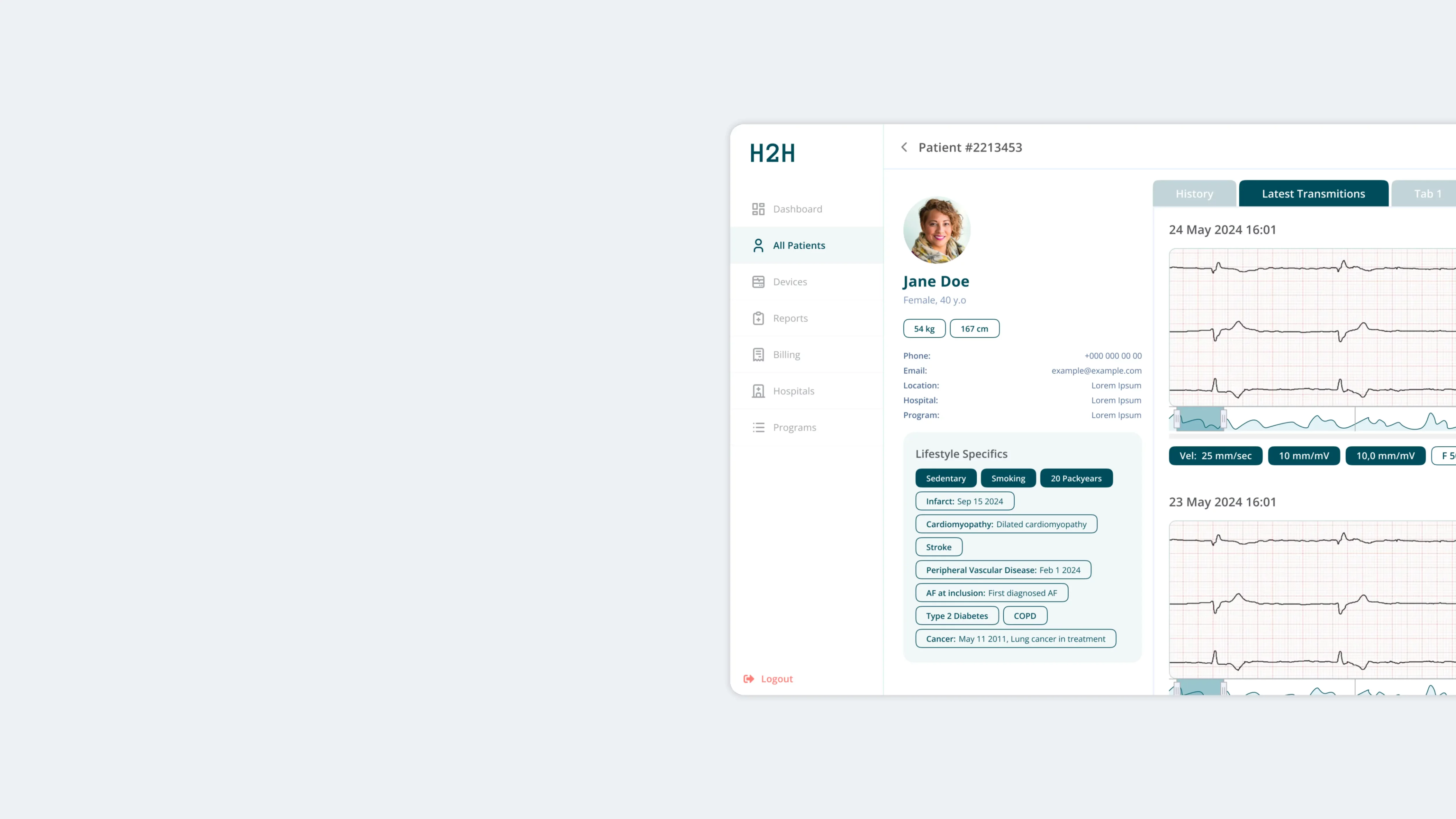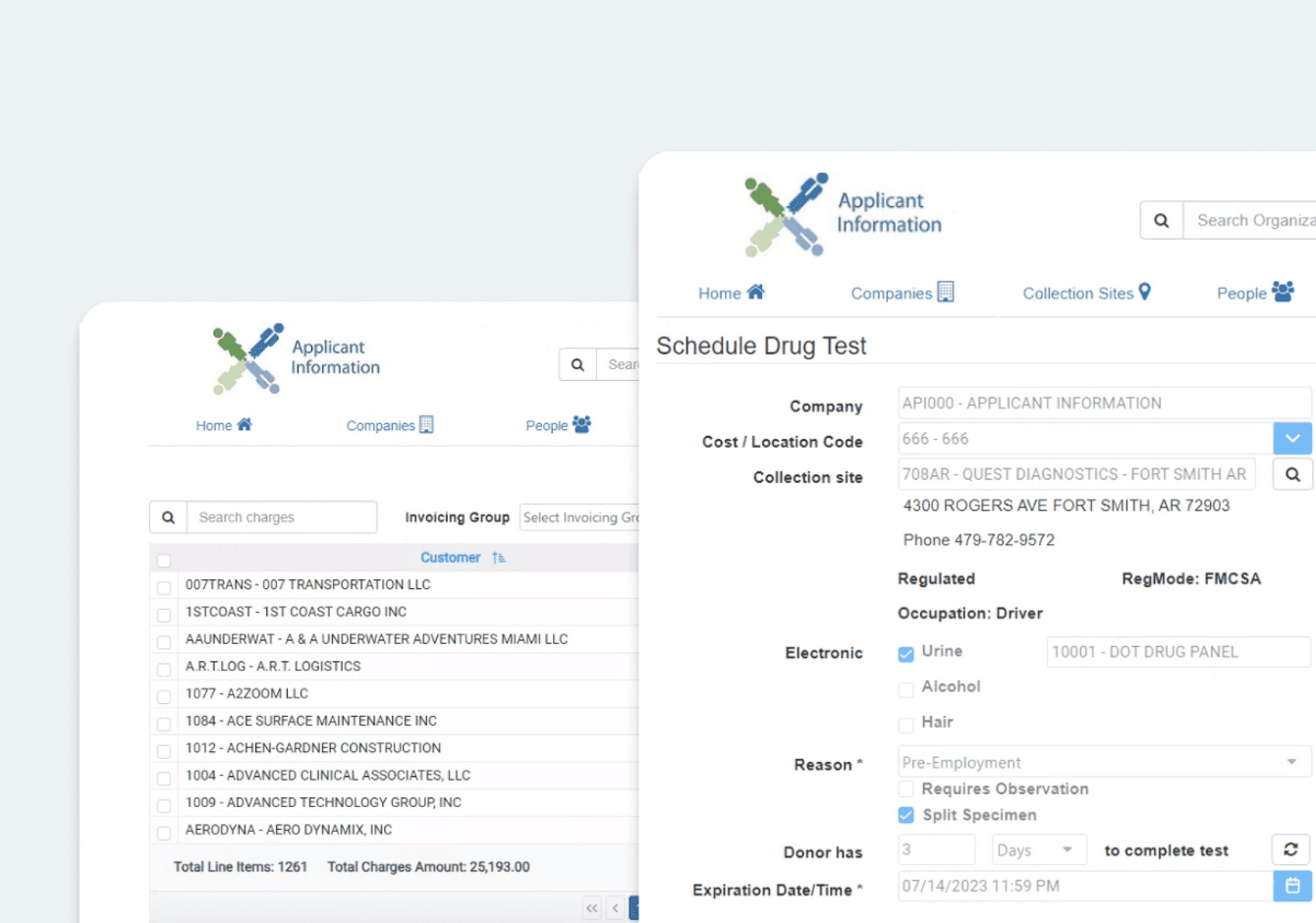Custom Telehealth Software Development
You need a custom telehealth solution that fits your workflow, your users, and your goals. We design and build custom telehealth software systems that does exactly that from scratch
Schedule a CallYou need a custom telehealth solution that fits your workflow, your users, and your goals. We design and build custom telehealth software systems that does exactly that from scratch
Schedule a CallMost prebuilt telehealth software systems fail to deliver. They lack flexibility, limit integration, and force clinicians to adapt their care model to the tool, not the other way around. If you’ve tried one, you know how clunky things can get.
You need more than a platform. You need a telehealth development company that understands the stakes in healthcare and can build technology that works the way your organization already does.

Your patients need better, faster access. A custom telehealth solution reduces friction in scheduling, follow-up, and virtual visits.
EHRs, billing, and e-prescription software don’t play nice with cookie-cutter tools. Our telehealth software development experience makes integration seamless, no trial and error.
A platform built around your model means more booked appointments, lower no-show rates, and more ways to scale care delivery.
Custom platforms are reshaping how care is delivered. With the right telehealth software development company, you can catch up fast, and pull ahead.
We offer complete telehealth app development services, handling everything from ideation to deployment. If you lack the time or resources for in-house builds, our team acts as your strategic development partner. As trusted telehealth software vendors, we help healthcare organizations of all sizes bring their digital health vision to life with speed, compliance, and precision.
Learn moreHire a high-performing team experienced in custom telehealth software development. Our engineers integrate with your internal operations, bring deep healthcare domain knowledge, and ensure continuity and quality throughout the lifecycle.
Perfect for scaling up quickly without starting from scratch.
Learn moreAlready have a dev team? Our augmentation services help you ramp up capacity fast with healthcare-savvy developers. Whether it’s custom telehealth solutions or connecting complex telehealth software systems, we fill skill gaps and accelerate delivery timelines.
Learn moreFrom strategy and discovery to testing and maintenance, we deliver end-to-end telehealth software development services. You get a tailored roadmap, user-first design, and scalable architecture, whether you need an MVP or a market-ready platform.
Learn moreLet’s create something that fits your care model, not the other way around.
Contact UsCustom-built telehealth software systems that support real-time video consultations, secure messaging, appointment scheduling, and integrated clinical workflows.
Ideal for hospitals, clinics, and medical groups looking for scalable and HIPAA-compliant telehealth solutions.
We design RPM tools that connect with wearables and home monitoring devices, helping providers track vital signs and symptoms in real time. These custom telehealth software solutions improve chronic care management and reduce hospital readmissions.
Learn moreSpecialized telehealth app development services tailored for psychologists, therapists, and counselors. We build systems that enable confidential video sessions, session notes, progress tracking, and support group facilitation — all compliant with privacy regulations.
Learn moreWe create personalized telehealth platforms for musculoskeletal and post-operative care. These solutions include exercise tracking, progress visualization, and custom therapy plans that patients can follow from home, with provider monitoring built in.
We engineer telehealth software that connects with your existing EHR. These platforms support real-time data sync, streamlined documentation, and faster workflows. The goal is to maximize efficiency and clinical accuracy.
Learn moreCreating custom telehealth solutions for your health practice is about taking a strategic step towards scalability, customization, reach, and improved return on investment. With a system built around your specific needs, you gain a competitive edge, offering a level of service that mass-market software cannot match.
Custom telehealth software solutions are inherently designed for growth and allows easy updates without service interruptions. Tailor-made telehealth software systems can expand functionality, accommodate more users, and integrate new services as your practice grows, all while maintaining the security and compliance crucial for healthcare providers.
Investing in custom telehealth software development often leads to a significant improvement in ROI, with the dual advantage of cost savings and increased revenue. Your business can operate more efficiently by reducing no-shows, optimizing appointment management, and cutting overhead costs associated with in-person telehealth visits.
Custom telehealth software development services fit your practice’s specific needs and processes. It ensures that the technology is a perfect match to support your internal operations and enhance patient care. With custom software, you can adopt the most suitable architecture and integrate third-party solutions without limitations.
With custom telehealth app development services you can break down geographical barriers and reach patients who are remote, immobile, or otherwise unable to visit a doctor in person. It makes quality healthcare services available to people regardless of location, considerably increasing your target audience.
Integration with insurance billing systems ensures that telehealth services are reimbursed accordingly, streamlining the payment process for both providers and patients. This feature also includes detailed reporting capabilities for transparent tracking of claims and reimbursements, which is crucial for financial planning and audit.
A scheduling module that enables the coordination of virtual and physical appointments, allowing physicians to manage their calendars and patient flow. The scheduling system has customizable templates for different visit types, and it can easily accommodate last-minute changes or cancellations, minimizing administrative strain and improving patient satisfaction.
An automated system that sends reminders of appointments to physicians and patients reduces no-shows that can disrupt the doctor’s daily schedule. You can also tailor such notifications to include additional instructions for preparation before a procedure and integrate them with personal calendar applications to enable participants to manage appointments.
This telehealth solution feature assists doctors in managing and tracking patient prescriptions, including order refills, appointment scheduling, dosage management, and compliance with medication regimens. It not only enhances patient adherence but also incorporates decision-support tools to alert patients and physicians about potential drug interactions, allergies, and other contraindications, thereby improving the safety of pharmaceutical care.
Video calls, synchronous and asynchronous messages are the basic features of integrated telehealth solutions. Encrypted communication channels allow clinicians to securely exchange information with colleagues and communicate directly with patients, ensuring confidentiality and compliance with healthcare regulations such as HIPAA.
Smooth integration with electronic health records (EHR) gives physicians immediate access to medical histories, test results, and previous consultations. It facilitates informed decision-making and continuity of care. Additionally, this integration enables real-time updates to patient records, ensuring that all health team members are informed of any changes in a patient’s status or treatment plan.
AI capabilities in telehealth solutions assist doctors in diagnosing patients and checking symptoms for accurate and timely care. They process large data volumes to generate helpful insights on a patient’s health, which doctors rely on to assign treatment, evaluate its effectiveness, and predict the possibility of complications.
Create Doctor-Patient Cloud Apps to Manage Health Conditions
Schedule a CallYou don’t have time to teach your dev team about HIPAA, EHR, or e-prescriptions. With Empeek, a trusted telehealth software development services provider, you don’t have to. We’ve already built:
We focus on healthcare engineering as our core expertise, having experience with telehealth, EHR, medical device software, RMP, and IoT systems.
We understand the complex aspects of the healthcare telemedicine industry and develop custom solutions with unique functionality that bring maximum benefits in each business case.
With over eight years in the field, we offer seasoned expertise in telehealth implementation for doctors who just started their private practice and enterprises.
Our discovery process clarifies scope, avoids waste, and prevents rework—saving you weeks of effort.
We built a custom RPM solution that allows the care team to obtain all the necessary health metrics and make people comfortable with health data measurement.
Explore the ProjectPROJECT SUCCESS
Our client addresses limitations in real-time heart monitoring through an AI-powered platform. Leveraging big data and cardiologist knowledge, Empeek designed a machine learning algorithms to enable automated heart issue classification, minimizing human intervention.
Explore the Project
PROJECT SUCCESS

We create custom, scalable web applications for healthcare professionals, patients, and hospital administration that streamline clinical care management and enable online consultations.
Learn moreOur expertise in AI and ML technologies enables us to build predictive health models and intelligent systems that revolutionize medical diagnostics and treatment.
Learn moreWe offer rapid and cost-effective MVP development to test your healthcare ideas and gather user feedback before investing your resources in the final product version.
Learn moreWe analyze your product concept to validate the feasibility of software development, align technology with your business goals, and determine the project scope.
Learn moreThe development cost for a home telehealth app with remote patient education and monitoring features can start from $20,000 for a basic build, escalating beyond $250,000 for a comprehensive telehealth software with advanced features, depending on design complexity and compliance needs. The cost also depends on the geographical location of an engineering team, with Eastern Europe considered an optimum price-quality match.
In addition to telehealth software development, hardware considerations for remote patient monitoring can affect the cost. The type and number of hardware devices needed can add to the overall expense, and integrating these hardware components can introduce additional complexity and potential costs of your telehealth software. Ongoing expenses, including maintenance and appointment management, must also be factored into the budget, typically running at 15-20% of the initial development cost per year.
To create custom telehealth solutions, you need a multidisciplinary development team. Key roles include a project manager, a business analyst who translates clinical needs into technical requirements, UX/UI designers, front-end and back-end developers. The team must also include quality assurance engineers who will carefully test the software to eliminate bugs and flaws.
The size and exact composition of the team may vary based on the scale and complexity of the telehealth software, including specialists for advanced features like AI or IoT where necessary.
Yes, we develop all healthcare solutions with the Health Insurance Portability and Accountability Act (HIPAA) guidelines in mind. We integrate robust security measures, including end-to-end data encryption, secure user authentication, and regular compliance audits, to protect patient information. We also provide ongoing software monitoring and updates to safeguard the software against evolving threats.
Our approach to integration ensures that your software is not only compliant upon launch but continues to adhere to HIPAA standards with evolving healthcare regulations.